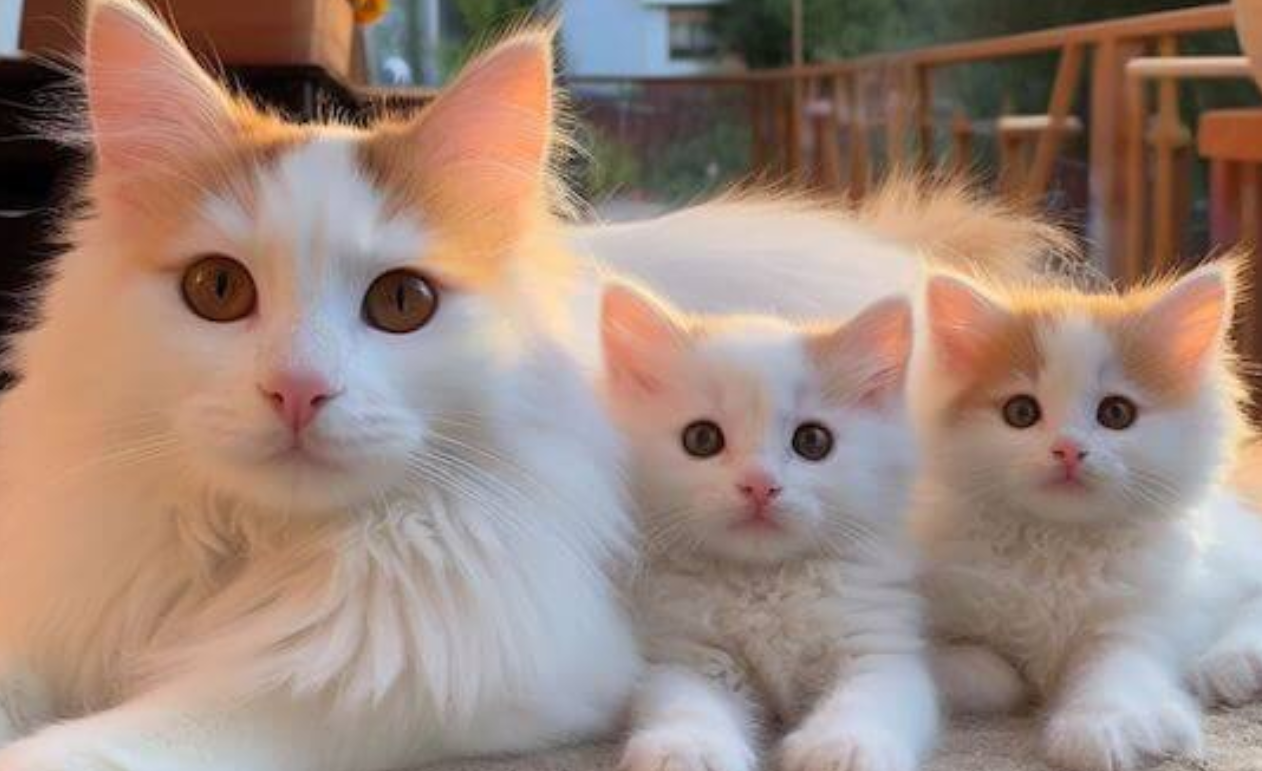Turkish Van Cats:
The disconcerting wonders of the eastern coasts
Presentation:
Settling along the coast of eastern Turkey, amid the peaceful waters of Lake Van, lies a breed of cat as captivating as the scene itself: the Turkish Van. With their striking coats, unmistakable markings, and brave spirit, Turkish Van cats have captured the hearts of felines everywhere. In this investigation, we go on a journey through the history, characteristics and persevering charm of the Turkish Van, revealing privileged insights into their root and the extraordinary bond they share with their human companions.
Chapter 1:
Beginnings and history
The history of the Turks of Van dates back thousands of years to the harsh scenes of eastern Turkey, where they were respected as valued companions and guardians of the antiquated religious communities and towns that dotted the banks of the Lake Van. Legend has it that the Turkish Vans were favored by divine beings for their extraordinary swimming abilities, which allowed them to easily explore the deceptive waters of Lake Van. Over time, Turkish vans became prized for their special coats, distinctive markings, and affectionate identity, earning them a place of honor in Turkish legends and culture.
Chapter 2:
Physical characteristics
What sets the Turkish Van apart is its striking appearance, characterized by a semi-long haired coat, a bushy tail, and a distinctive “van” pattern: a strong colored body with colorful markings on the head and tail . Turkish vans are known for their interesting coloring, the most common being red and white, followed by cream and white. Their coat is delicate and elegant to the touch, with a thick undercoat that protects from the cold and waterproofs for swimming.
Chapter 3:
Disposition and identity
Beyond their striking appearance, Turkish Van cats are loved for their cheerful, courageous and warm nature. They are intelligent, autonomous, and deeply social creatures, forming strong bonds with their human companions and leveraging play and companionship intelligently. Turkish Vans are also known for their love of water, frequently watering and playing in sinks, baths or even swimming pools, a behavior that dates back to their ancient roots as talented swimmers in the waters of Lake Van.
Chapter 4:
Care and support
While Turkish Van cats are generally low maintenance when it comes to grooming, they do require standard brushing to prevent tangles and tangles in their medium-long hair coats. Additionally, Turkish Vans are dynamic, lively creatures that require a lot of mental and physical incentive to stay upbeat and strong. Intuitively giving toys, climbing structures, and openings for play and investigation can help them realize their characteristic instincts and keep them rationally and physically enclosed.
Chapter 5:
Ubiquity and recognition
Later, Turkish Van cats gained notoriety as cherished companions and beloved pets around the world. Their striking appearance, bold soul and loving nature have charmed them to attract their loved ones of all ages. Turkish Vans are recognized by major cat registries including the Universal Cat Affiliation (TICA) and the Cat Fanciers’ Affiliation (CFA), encouraging them to establish their status as a recognized and sought-after breed.
Conclusion:
As we celebrate the immortal charm and bewildering excellence of the Turkish Van, we honor their legacy as treasured companions and guardians of the Eastern Shores. With their striking coats, unmistakable markings and courageous spirit, Turkish Van cats bring happiness, warmth and companionship into the lives of their human companions, beautifying our homes with their closeness and reminding us of the magnificence and thoughtfulness of the cat world . As we continue to appreciate and revere Turkish Vans, we pay homage to their archaic heritage and enduring offering, celebrating their status as perplexing delights of the Eastern Shores.
